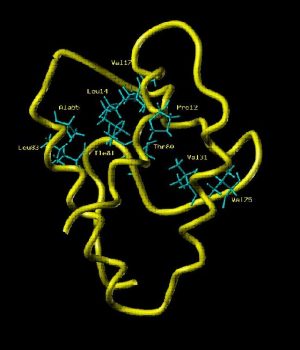Three research programs of the IRAMIS found an natural extension towards biology:
- Molecular engineering, where studies of co-operative interactions of molecules in solution found a direct extension towards studies of proteins and of the various assembly modes of biological interest molecules,
- Matter with high density of energy, where radiolysis, molecule radiation interactions, can be directly transposed to molecules like the ADN,
- Divided ultra matter, where nanostructured materials, nanophysics and biology converge.
Knowledge and use of techniques which were traditionally in the physicist or the chemist fields appears valuable in the study of biological objects. Mainly, that relates to laser studies, neutron diffusion and diffraction, nonconventional NMR especially developed for the study of proteins, ICP-MS (coupling gun plasma – mass spectrometry) analyses and nuclear microprobe for the study of biological and environmental samples (micro-organisms, cells, fabrics, plants…).






